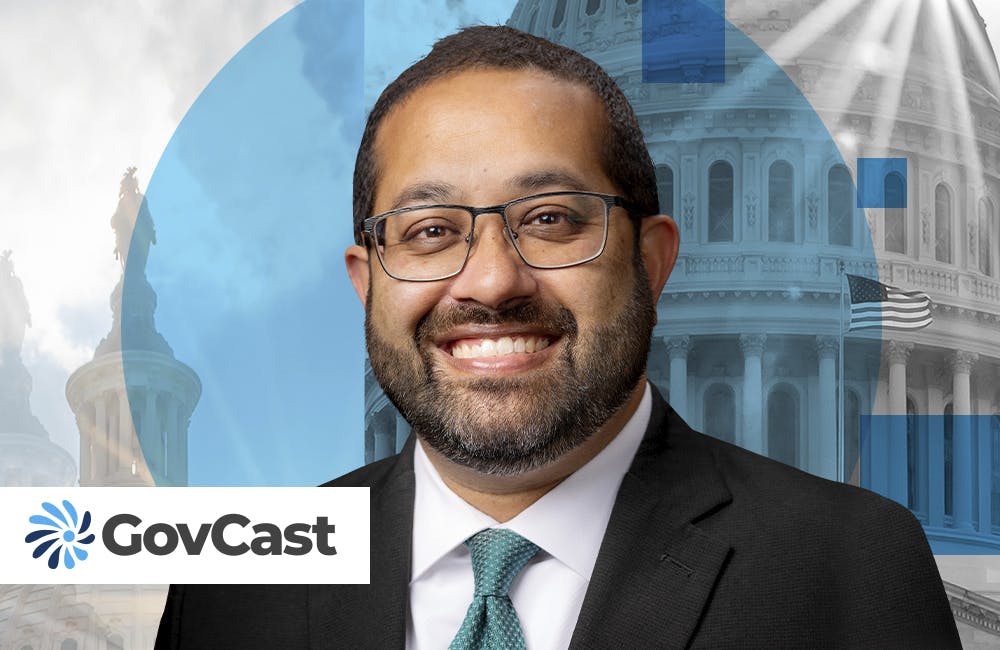How Technology Can Attract the Next Generation of Government Workers
Lawmakers discuss opportunities for the federal government to compete with industry for top talent.

For nearly two decades, the federal government has faced shortfalls in workforce recruitment, retention, and development efforts, though not much has changed. To overcome these challenges, lawmakers and federal worker advocacy groups in Washington, D.C. highlighted the holistic opportunities available to set up the future workforce.
Since 2001, the Government Accountability Office has reported strategic human capital management as an identified area of serious weakness, defined as “high risk,” for the federal government to improve. This includes attracting top young talent in the civil service, particularly for high-demand fields like information technology and cybersecurity. (According to GAO, agencies spend over $90 billion on IT each year.)
Despite the high-spending in IT, the number of new-hire interns overall at agencies has been in sharp decline. According to the president’s fiscal year 2020 budget request, there were approximately 4,000 interns hired to full-time federal work in 2018 — short from 35,000 eight years ago.
“The need to build the next generation of federal employees has never been greater,” Subcommittee Chairman Gerry Connolly said during a House Oversight and Reform Subcommittee on Government Operations hearing Sept. 25 highlighting potential strategies for recruiting the next generation of public servants. “Agencies across the federal government are at risk of losing institutional knowledge as older employees retire and agencies find themselves unable to recruit new employees for the future generation of civil servants.”
Connolly cited a Government Accountability Office report that found only 6.1% of the federal workforce was under the age of 30 in 2018, compared to 24% in the civilian U.S. labor workforce. GAO also found that in 2017, 69% of the federal workforce was over the age of 40, whereas 54% of the total civilian labor force fell into that category.
Obtaining technical knowledge primarily in robotics and artificial intelligence may prove particularly challenging for agencies, especially if the younger generation “born to technology like fish are born to water” isn’t successfully pulled from the hiring pool, Connolly said.
It is, therefore, necessary that agencies keep pace with advancements in modern technology with the way it hires its workforce.
“More than 80% of federal occupations are expected to be impacted by technology and automation, but agencies haven’t done the critical strategic planning to determine what needs to change and how to align their recruitment and retainment plans accordingly,” said Margot Conrad, director of federal recruiting and hiring programs for the Partnership for Public Service.
The problem stems in part from structural system policies that haven’t been updated in over 40 years, added GAO Director of Strategic Issues Robert Goldenkoff.
This includes job classifications, compensation rates, as well as performance management that affects the recruitment and retention of employees, which date back to policies enacted through the Civil Service Reform Act of 1978 — many of which are obsolete in today’s job market, said Subcommittee Ranking Member Mark Meadows.
On top of that, federal workers undergo administrative hurdles to get hired, which can cause uncertainty and take a toll on worker morale, said National President of the National Treasury Employees Union Anthony Reardon, especially when background checks and security clearances are at stake.
Various tactics agencies take on now could build a workforce that conquers future challenges brought on by changes such as those in technology. Specifically, agencies can build a talent pipeline by implementing internship programs and hiring authorities.
Internships are “an excellent way of building a pipeline into government,” Goldenkoff said, “though it would be more helpful if interns can be converted noncompetitively to permanent, career employees. That’s no longer the case in many instances.”
Building such a pipeline and continuously investing in education programs for future talent can put agencies at an advantage in areas such as strengthening cybersecurity posture. The Department of Health and Human Services, for example, recently introduced cyber escape rooms to provide that training for its cyber workforce.
Other programs include the Federal Cyber Reskilling Academy, which offers more fluidity and learning opportunities for existing federal employees, Greszler said.
Innovative talent models, such as the Cybersecurity Talent Initiative, also offer recent college graduates the ability to gain learning experience in the public sector, Conrad said. Programs like the Civic Digital Fellowship have helped college students pass the federal government’s barrier to entry, though students must be given more opportunities to smoothly transition to full-time work.
Agencies can also offer telework and work-life balance benefits as an incentive. The U.S. Department of Agriculture, for instance, has a policy permitting one telework day a week. Other agencies across the government have implemented similar policies.
Additionally, technology can be used to create efficient, user-friendly interfaces for younger applicants and agencies to navigate the federal hiring system.
Developing a mobile application for USAjobs.gov, for instance, would provide job-seekers easy access to employment opportunities, Conrad explained. A centralized database for intern resumes could also make it quicker for the government to find and directly hire students and entry-level talent, while artificial intelligence and other emerging tech could help screen and align applicants with vacant agency positions, she added.
Since there are as many as 430 agencies and sub-agencies, 350 different occupations and 2.1 million federal workers, there isn’t necessarily a “one-size-fits-all” solution for each agency’s strategic human capital management.
However, lawmakers and federal worker advocates agree that the public sector can tackle skilled workforce shortages by reaching young people more effectively through technology and competitive benefits.
This is a carousel with manually rotating slides. Use Next and Previous buttons to navigate or jump to a slide with the slide dots
-

DOD Has a New Cyber Resiliency Assessment Program
Defense officials tout the continuous assessment feature and scalability of the new program amid increased cyber threats.
5m read -

Transitioning Systems for Modern Agency Missions
IT modernization is a constant process necessary for improving customer service, mission delivery and collaboration.
40m watch -

Cyber Resilience and Recovery Amid Evolving Cyber Threats
Data durability is a key aspect of NIST’s cybersecurity framework for public and private organizations.
21m listen -

How Tech Enables Environmental Justice at EPA
The agency wants to eliminate bias and establish new tech standards to reduce greenhouse gas emissions.
39m listen







